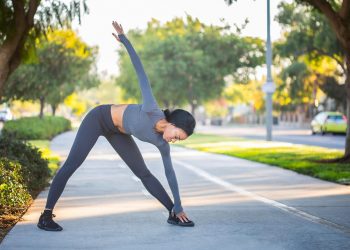Contents
- How to Fall Asleep Fast: Proven Techniques to Sleep in Seconds
- Why It’s Essential to Fall Asleep Fast
- How to Fall Asleep Fast in 10 Seconds: The Military Method
- How to Fall Asleep Fast in 60 Seconds: The 4-7-8 Breathing Technique
- How to Fall Asleep Fast in 120 Seconds: Progressive Muscle Relaxation (PMR)
- Additional Lifestyle Hacks to Help You Fall Asleep Fast
- Common Mistakes That Prevent You From Falling Asleep Fast
- Bottom Line
- FAQs
How to Fall Asleep Fast: Proven Techniques to Sleep in Seconds
Struggling to fall asleep fast can be exhausting and stressful, but with the right methods, you can train your body to drift off naturally, enjoy deeper rest, and wake up feeling energized.
Why It’s Essential to Fall Asleep Fast
Before diving into how to fall asleep fast, let’s understand why it matters beyond just “getting rest.” Sleep quality directly impacts your mental sharpness, emotional resilience, and physical well-being. Here’s why speeding up the time it takes to fall asleep is a game-changer:
-
Boosts Brain Performance: Falling asleep quickly allows you to enter the vital REM and deep sleep stages sooner, improving memory retention, creativity, and cognitive functions. If you’re spending hours tossing and turning, you miss out on this crucial recovery phase.
-
Enhances Emotional Health: Slow sleep onset reduces stress hormones like cortisol. Less tossing and turning means fewer mood swings, less anxiety, and improved emotional regulation.
-
Supports Physical Health: Sleep speeds up immune system repair and hormone regulation. Struggling to fall asleep fast can chronically disrupt these systems, leading to metabolic issues, weight gain, and lower immunity.
-
Improves Daytime Energy: When you fall asleep fast, you spend less time awake in bed worrying. This means you wake more refreshed, with better energy and focus throughout the day.
The bottom line? Learning how to fall asleep fast is more than a convenience — it’s a health imperative.
How to Fall Asleep Fast in 10 Seconds: The Military Method
Developed by U.S. military personnel who needed to rest instantly under battlefield stress, this method trains your body and mind to switch off quickly — and yes, it’s surprisingly effective for civilians too.
Here’s the breakdown:
-
Relax Your Face Completely
Start by consciously relaxing every muscle in your face: unclench your jaw, let your tongue rest loosely, and soften around your eyes. Facial tension is surprisingly common and keeping it relaxed sends a strong signal to your brain that it’s time to rest. -
Drop Your Shoulders and Arms
Let your shoulders drop as low as possible, and rest your arms naturally by your side. Holding tension here triggers your body’s fight-or-flight response. -
Exhale Deeply, Relax Your Chest
Take a slow, deep breath and fully exhale, focusing on relaxing your chest and torso. This deep breath is a reset button to calm your nervous system. -
Relax Your Legs from Thighs to Toes
Let your legs go completely limp. Tension in legs is common when anxious. By consciously relaxing this area, you tell your brain that physical danger is gone. -
Clear Your Mind with a Peaceful Visual
Imagine a serene, calming scene such as floating on a quiet lake or lying in a hammock. If distracting thoughts come, mentally say “don’t think” for 10 seconds to gently push them away.
Why this works:
The Military Method systematically shuts down physical tension while retraining your mind to avoid active thought patterns that keep you awake. It’s a mind-body reset.
Practice Tips:
-
It might take 3-4 weeks of consistent nightly practice before you can fall asleep fast using this method.
-
Don’t stress if it doesn’t work immediately. Relaxation is a skill that builds with time.
How to Fall Asleep Fast in 60 Seconds: The 4-7-8 Breathing Technique
This method combines the power of controlled breath with meditation principles. It activates the parasympathetic nervous system—the “rest and digest” state—helping you fall asleep fast by slowing your heart rate and calming your mind.
Step-by-step:
-
Inhale through your nose for 4 seconds — fill your lungs comfortably but deeply.
-
Hold your breath for 7 seconds — this slight breath retention increases oxygen efficiency and relaxes your body further.
-
Exhale slowly and fully through your mouth for 8 seconds — make a whooshing sound to help deepen relaxation.
Repeat this breathing cycle 4–5 times.
Why it works:
Slowing your breath this way reduces adrenaline and calms the nervous system. It also distracts your brain from stressful or racing thoughts, helping you slip into sleep effortlessly.
Additional pointers:
-
Practice this method twice a day—once when you wake up and once before bed—to train your body’s relaxation response.
-
If you struggle to hold your breath for 7 seconds at first, start smaller and gradually increase.
How to Fall Asleep Fast in 120 Seconds: Progressive Muscle Relaxation (PMR)
PMR is a powerful technique, especially if your difficulty falling asleep fast is caused by anxiety or physical tension.
How to do it:
-
Start at your feet. Tense the muscles in your toes and feet for 5 seconds.
-
Release and feel the relaxation spread.
-
Move upward: calves, thighs, abdomen, chest, arms, hands, neck, and face, tensing each muscle group for 5 seconds then relaxing.
Focus on the contrast between tension and relaxation. Combine this with slow, deep breathing.
Why PMR works:
By systematically releasing muscle tension, you help your body physically let go of stress. The added mental focus on muscle groups helps quiet your racing mind.
Who benefits most:
-
People with chronic stress or anxiety
-
Those with insomnia related to physical discomfort or restless body syndrome
Additional Lifestyle Hacks to Help You Fall Asleep Fast
Your ability to fall asleep fast isn’t just about what you do in bed—it’s about setting the stage all day long.
1. Limit Screen Time Before Bed
The blue light emitted from smartphones, tablets, and computers suppresses melatonin, the hormone that controls your sleep-wake cycle. Avoid screens at least 60 minutes before bedtime.
Instead, opt for reading a book, journaling, or listening to calm music.
2. Optimize Your Sleep Environment
Your bedroom should be a sanctuary for sleep:
-
Temperature: Keep it cool, ideally 60-67°F (15-19°C).
-
Light: Use blackout curtains or sleep masks to block artificial light.
-
Noise: White noise machines or earplugs can drown out disruptive sounds.
3. Stick to a Consistent Sleep Schedule
Going to bed and waking up at the same time every day—even weekends—helps regulate your circadian rhythm, making it easier to fall asleep fast naturally.
4. Avoid Caffeine and Heavy Meals Before Bed
Caffeine has a half-life of about 6 hours, so avoid it after early afternoon. Heavy meals can cause digestive discomfort that keeps you awake. Opt for light snacks like a small banana or handful of almonds if needed.
5. Get Regular Physical Activity
Exercise promotes deeper, faster sleep but avoid intense workouts 2-3 hours before bedtime.
6. Manage Daytime Stress
Incorporate meditation, yoga, or mindfulness to reduce the mental clutter that keeps you awake at night.
Common Mistakes That Prevent You From Falling Asleep Fast
Understanding what not to do is just as important:
-
Lying in bed awake for too long: This teaches your brain to associate the bed with wakefulness. If you can’t fall asleep within 20 minutes, get up and do a quiet, non-stimulating activity until you feel sleepy.
-
Using your phone as an alarm clock: This tempts you to check social media or emails before sleep, stimulating your mind.
-
Ignoring sleep cues: Going to bed only when exhausted can backfire. Try to hit the pillow when you feel drowsy but not overly tired.
Bottom Line
Mastering how to fall asleep fast isn’t a magic trick—it’s about consistent practice, a healthy mindset, and smart habits. Use the Military Method for rapid relaxation, the 4-7-8 breathing for quick calm, and Progressive Muscle Relaxation if your body is tense. Layer these with a solid sleep environment and lifestyle, and you’ll turn restless nights into peaceful, restorative sleep.
Sleep well—it’s your most powerful productivity and health hack.
FAQs
Q: How long does it take to see results from these sleep techniques?
A: Most people start noticing improvements within 1-3 weeks of consistent practice.
Q: Can these techniques replace medical treatment for insomnia?
A: They are excellent first steps but consult a healthcare provider for chronic sleep disorders.
Q: What if I wake up in the middle of the night?
A: Use the 4-7-8 breathing technique or Progressive Muscle Relaxation to help you fall back asleep fast.
Keep pushing forward—your ability to fall asleep fast is within your control. Every night is a fresh start toward better sleep and a healthier, sharper you.
Get Your FREE Natural Health Guide!
Subscribe now and receive our exclusive ebook packed with natural health tips, practical wellness advice, and easy lifestyle changes — delivered straight to your inbox.















